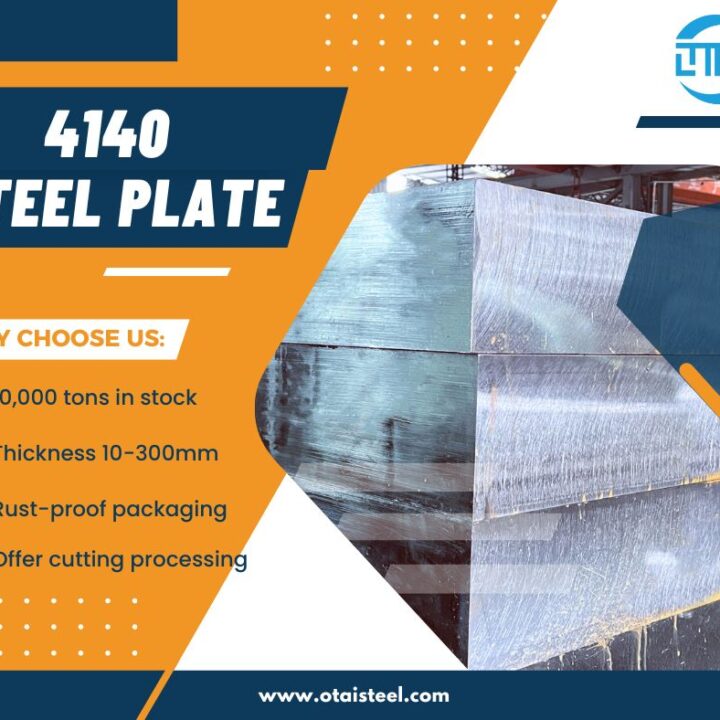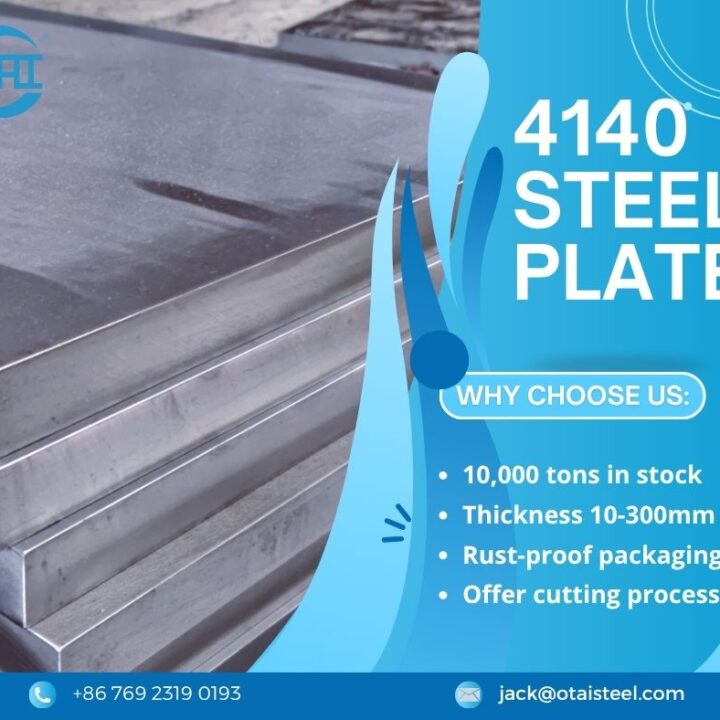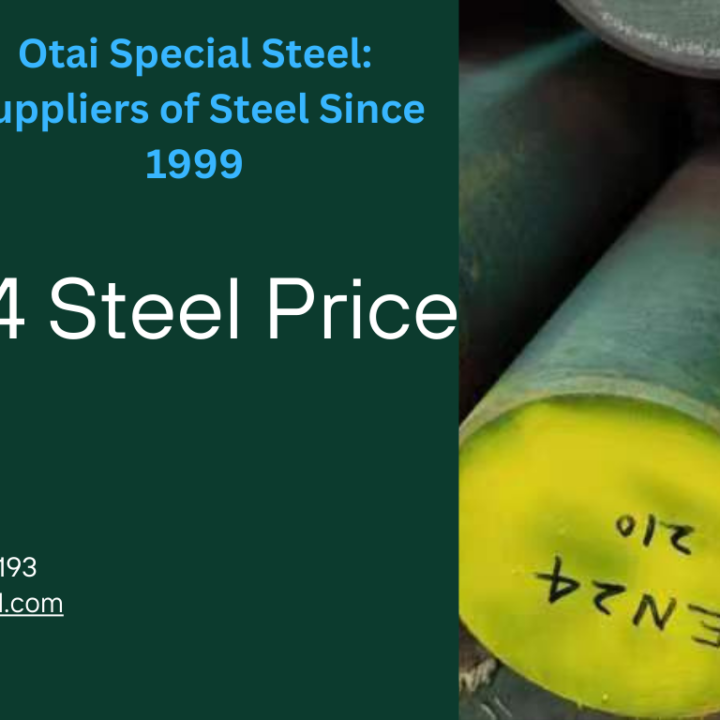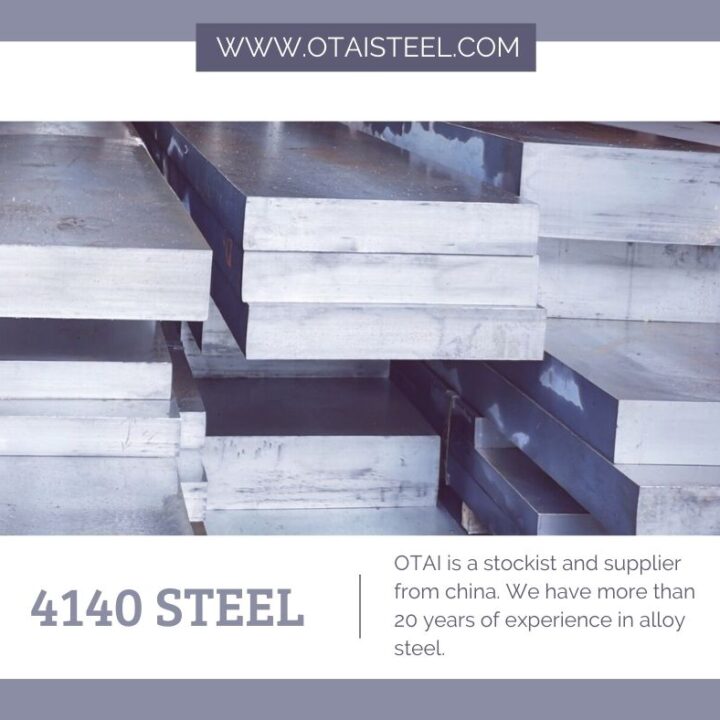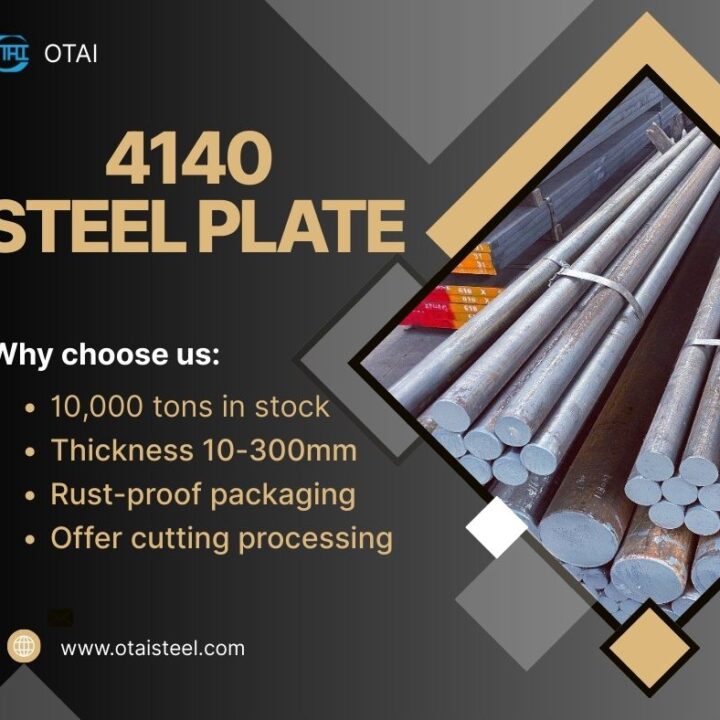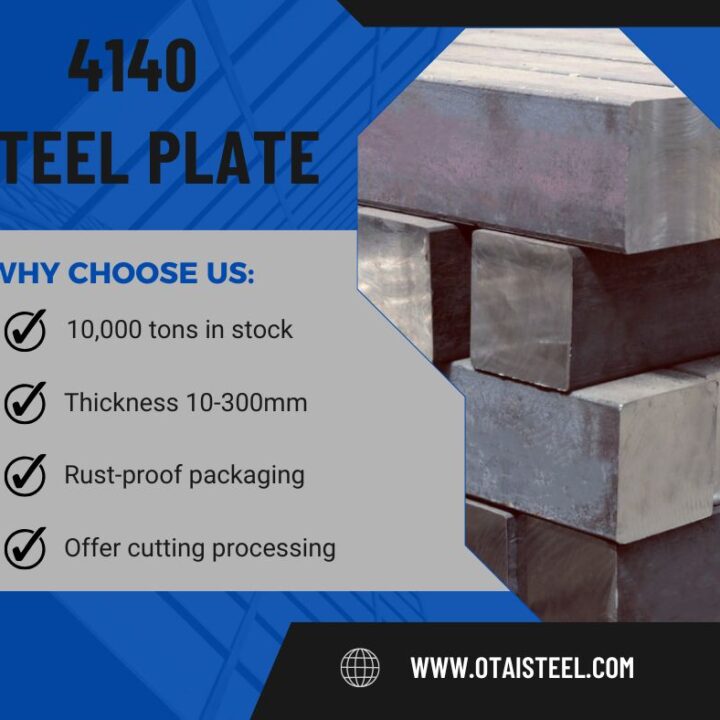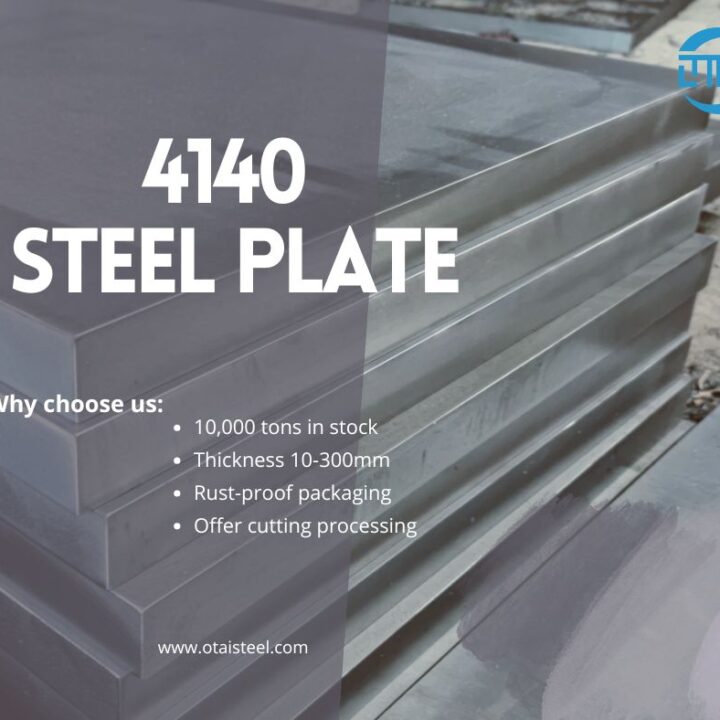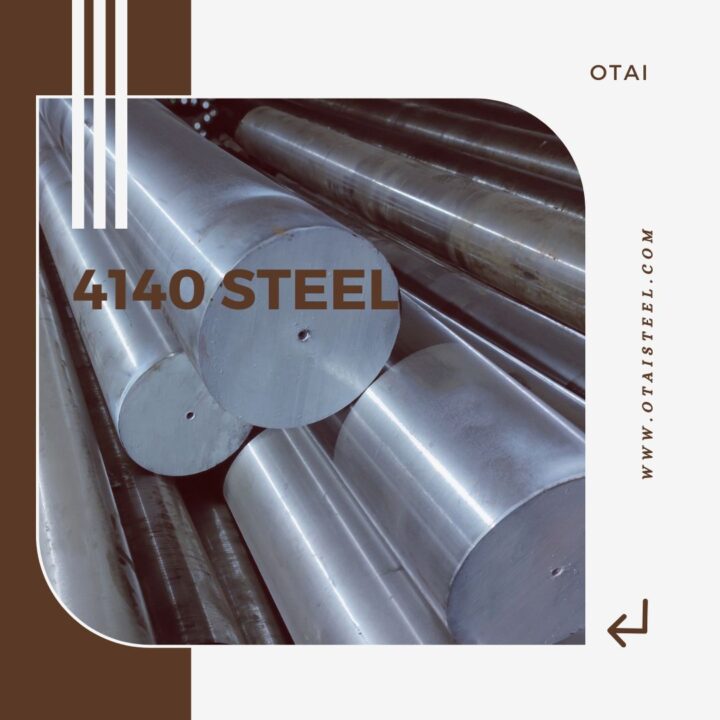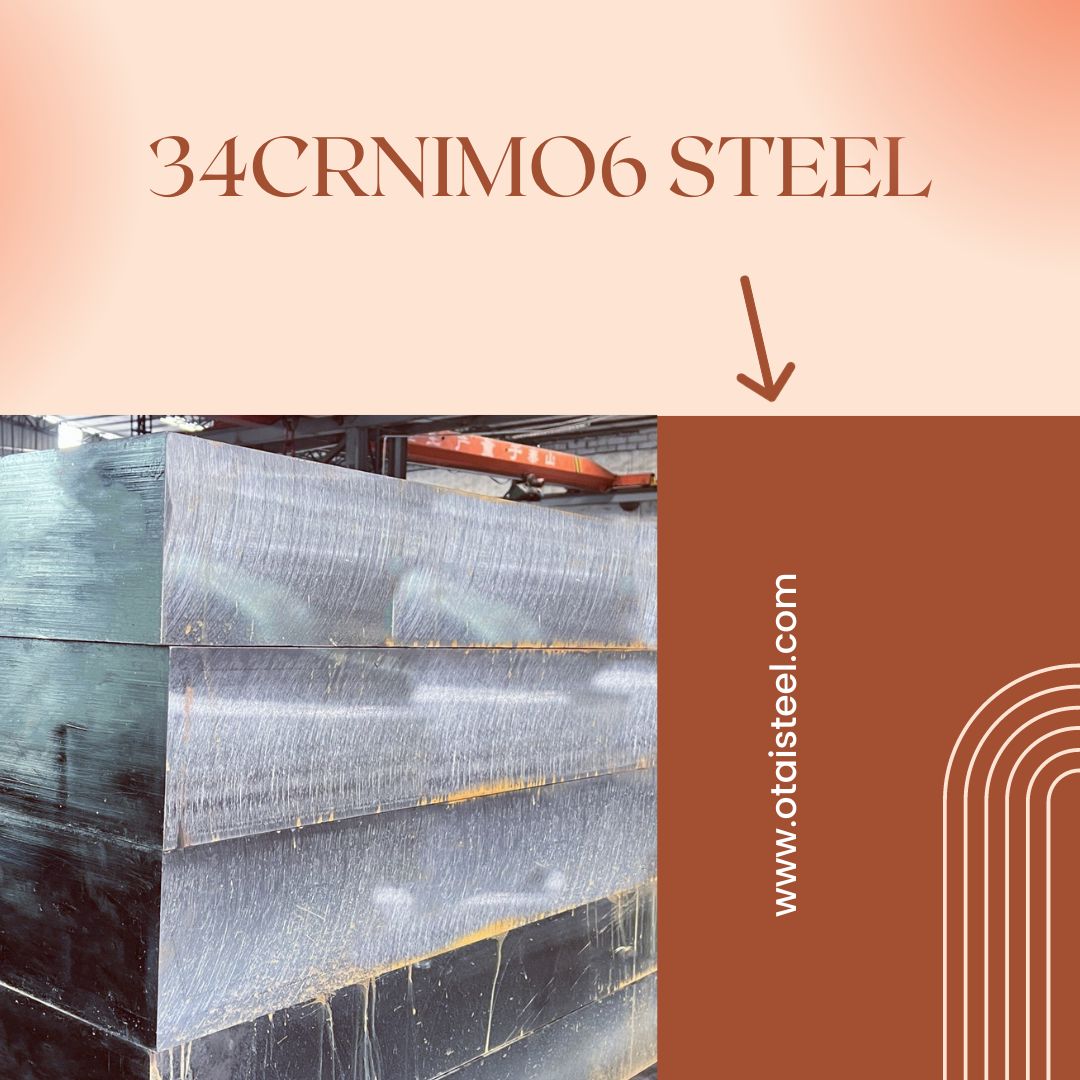 Steel is the backbone of countless industries, offering a wide range of grades, each with its unique properties. In this comprehensive guide, we’ll explore 34CrNiMo6 steel’s various aspects of this steel, its composition, mechanical properties, and its applications.
Steel is the backbone of countless industries, offering a wide range of grades, each with its unique properties. In this comprehensive guide, we’ll explore 34CrNiMo6 steel’s various aspects of this steel, its composition, mechanical properties, and its applications.
Understanding the Composition
- Carbon (C): Typically, 34CrNiMo6 contains around 0.30% to 0.38% carbon. Carbon influences hardness and strength.
- Chromium (Cr): With chromium levels ranging from 1.3% to 1.7%, this alloy gains resistance to corrosion and hardenability.
- Nickel (Ni): Around 1.3% to 1.7% nickel content contributes to toughness and high-temperature strength.
- Molybdenum (Mo): Molybdenum content, usually between 0.15% to 0.30%, enhances hardenability and high-temperature strength.
- Silicon (Si): Silicon content, typically ranging from 0.15% to 0.40%, aids in deoxidation and improves steel cleanliness.
- Manganese (Mn): Manganese content, about 0.40% to 0.60%, contributes to hardenability and tensile strength.
Exploring Mechanical Properties
34CrNiMo6 steel’s mechanical properties are the key to its popularity in various industries. Let’s take a closer look at these remarkable attributes.
1. High Tensile Strength
34CrNiMo6 steel boasts impressive tensile strength, typically falling within the range of 850 MPa to 1000 MPa. This high tensile strength makes it an ideal choice for applications subject to heavy loads and stress.
2. Exceptional Toughness
Toughness is a material’s ability to absorb energy without fracturing. 34CrNiMo6 steel excels in this department, even at low temperatures, making it valuable in applications requiring impact resistance.
3. Superior Fatigue Resistance
The steel’s fatigue resistance is outstanding, meaning it can withstand repeated loading and unloading cycles without succumbing to fatigue-induced failure. This property is crucial for components subjected to dynamic loads, such as gears and crankshafts.
4. Elevated Hardness
With a hardness level typically between 290 HB to 350 HB, 34CrNiMo6 steel is well-equipped to withstand wear and abrasion. This characteristic makes it suitable for demanding, heavy-duty applications.
5. High-Temperature Strength
Thanks to its nickel and molybdenum content, 34CrNiMo6 steel retains its strength even at elevated temperatures. This attribute is vital in applications exposed to high levels of heat.
6. Corrosion Resistance
While 34CrNiMo6 steel contains chromium, which provides some level of corrosion resistance, it’s not as corrosion-resistant as stainless steel. It can still withstand certain environmental conditions, but it’s not the best choice for highly corrosive environments.
Applications Across Industries
The exceptional mechanical properties of 34CrNiMo6 steel make it invaluable in various applications across different sectors.
- Aerospace: The aerospace industry relies on 34CrNiMo6 steel for components like aircraft landing gear, where high strength and fatigue resistance are paramount.
- Automotive: In the automotive sector, gears, shafts, and other vital components that require high tensile strength and toughness.
- Machinery: Heavy machinery manufacturing benefits from the use of 34CrNiMo6 steel, especially in gearboxes and crankshafts, where high strength and durability are critical.
- General Engineering: In numerous general engineering applications, where high tensile strength and toughness are required, 34CrNiMo6 steel is the preferred choice.
Welding and Machining
- Welding
Welding 34CrNiMo6 steel can be challenging due to its high carbon and alloy content. Specialized welding techniques and precautions are necessary to maintain its mechanical properties post-welding.
- Machining
Machining 34CrNiMo6 steel demands proper tooling and cutting techniques. High-speed steel or carbide tools, along with adequate cooling, are recommended for achieving good results and extending tool life.
34CrNiMo6 steel’s high tensile strength, toughness, fatigue resistance, and ability to withstand high temperatures make it a preferred choice in industries where reliability and durability are paramount. Understanding its chemical composition and mechanical attributes is essential for selecting the right material for specific applications.
